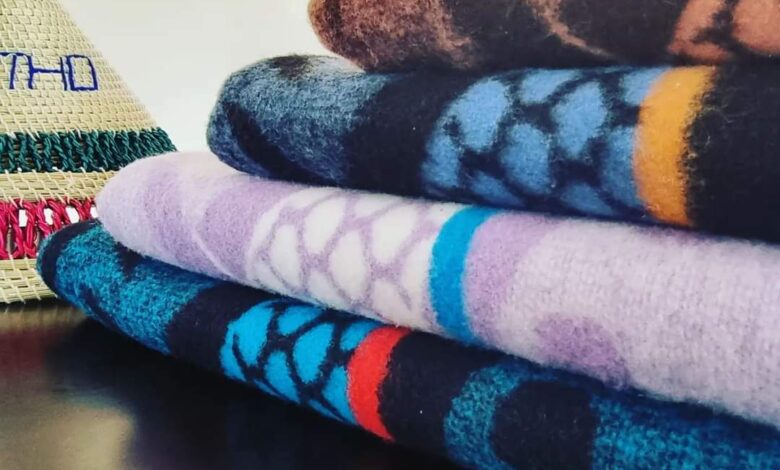Top Lesotho Traditional Clothing

Lesotho, a land of majestic mountains and vibrant culture, is renowned for its rich tapestry of traditional attire, reflecting the pride and heritage of its people. From the iconic Basotho blanket to intricately embroidered garments, Lesotho’s traditional clothing is a testament to centuries of craftsmanship, symbolism, and identity. Here, we delve into the top Lesotho traditional clothing that embodies the spirit of Basotho culture:
1. Basotho Blanket:
The Basotho blanket is perhaps the most iconic symbol of Lesotho’s cultural heritage. Woven from wool and adorned with colorful geometric patterns, stripes, and symbols, the Basotho blanket is both practical and symbolic. Originally introduced by European traders in the 19th century, it has become an integral part of Basotho identity, worn proudly by men, women, and children on various occasions, including weddings, ceremonies, and cultural festivals.
2. Basotho Hat (Mokorotlo):
The Basotho hat, known as the mokorotlo, is a distinctive cone-shaped hat made from woven grass or reeds. Symbolizing pride, unity, and authority, the mokorotlo is worn by men and women as a traditional head covering. Its unique design has become synonymous with Basotho culture and is often featured in traditional ceremonies, dances, and celebrations.
3. Seshoeshoe Fabric:
Seshoeshoe fabric is a vibrant and colorful textile that holds significant cultural significance in Lesotho. Originally brought to Lesotho by European traders, it has since become an integral part of Basotho traditional attire. Characterized by intricate designs, bold colors, and geometric patterns, seshoeshoe fabric is used to create a wide range of garments, including dresses, skirts, and shirts, worn by both men and women on special occasions.
4. Dira:
Dira is a traditional garment worn by Basotho women, consisting of a wrap-around cloth tied around the waist and a matching shawl draped over the shoulders. Made from seshoeshoe fabric or other locally woven textiles, dira is often embellished with decorative embroidery, beadwork, or lace trimmings, reflecting the wearer’s personal style and cultural heritage.
5. Kobo (Traditional Beadwork):
Kobo, or traditional beadwork, holds a special place in Basotho culture, serving as a form of artistic expression and cultural identity. Intricately crafted beadwork is often used to adorn clothing, accessories, and ceremonial regalia, adding a touch of elegance and symbolism to traditional attire. From necklaces and bracelets to headdresses and belts, kobo showcases the skill and creativity of Basotho artisans.
6. Seanamarena (Embroidered Blanket):
Seanamarena is a type of embroidered blanket that holds great cultural significance in Lesotho. Traditionally worn by royalty and esteemed individuals, seanamarena blankets feature intricate embroidery, depicting symbolic motifs, animals, and geometric patterns. These blankets are treasured heirlooms passed down through generations, symbolizing prestige, heritage, and tradition.
Lesotho’s traditional clothing is a vibrant and dynamic expression of Basotho culture, heritage, and identity. From the iconic Basotho blanket to intricately embroidered garments and colorful beadwork, each piece of traditional attire carries with it a rich tapestry of history, symbolism, and craftsmanship. As Lesotho continues to embrace its cultural heritage, traditional clothing remains a source of pride, unity, and celebration for the Basotho people, preserving and perpetuating their unique legacy for generations to come.
Join 'Lesotho News' WhatsApp Channel
Get breaking Lesotho news — delivered directly to your WhatsApp.
CLICK HERE TO JOIN



